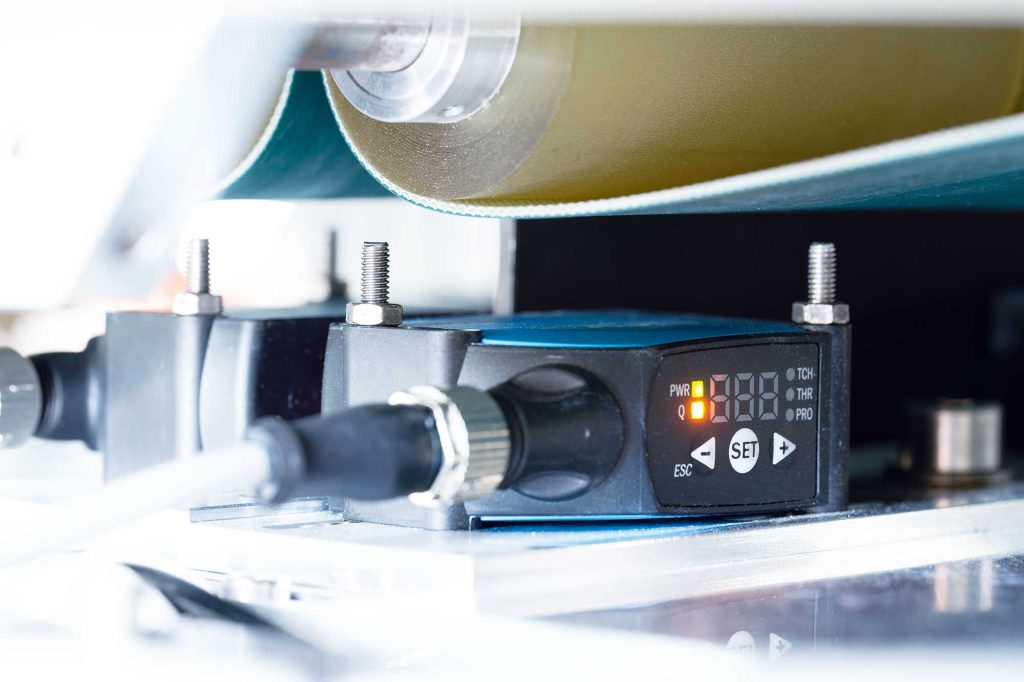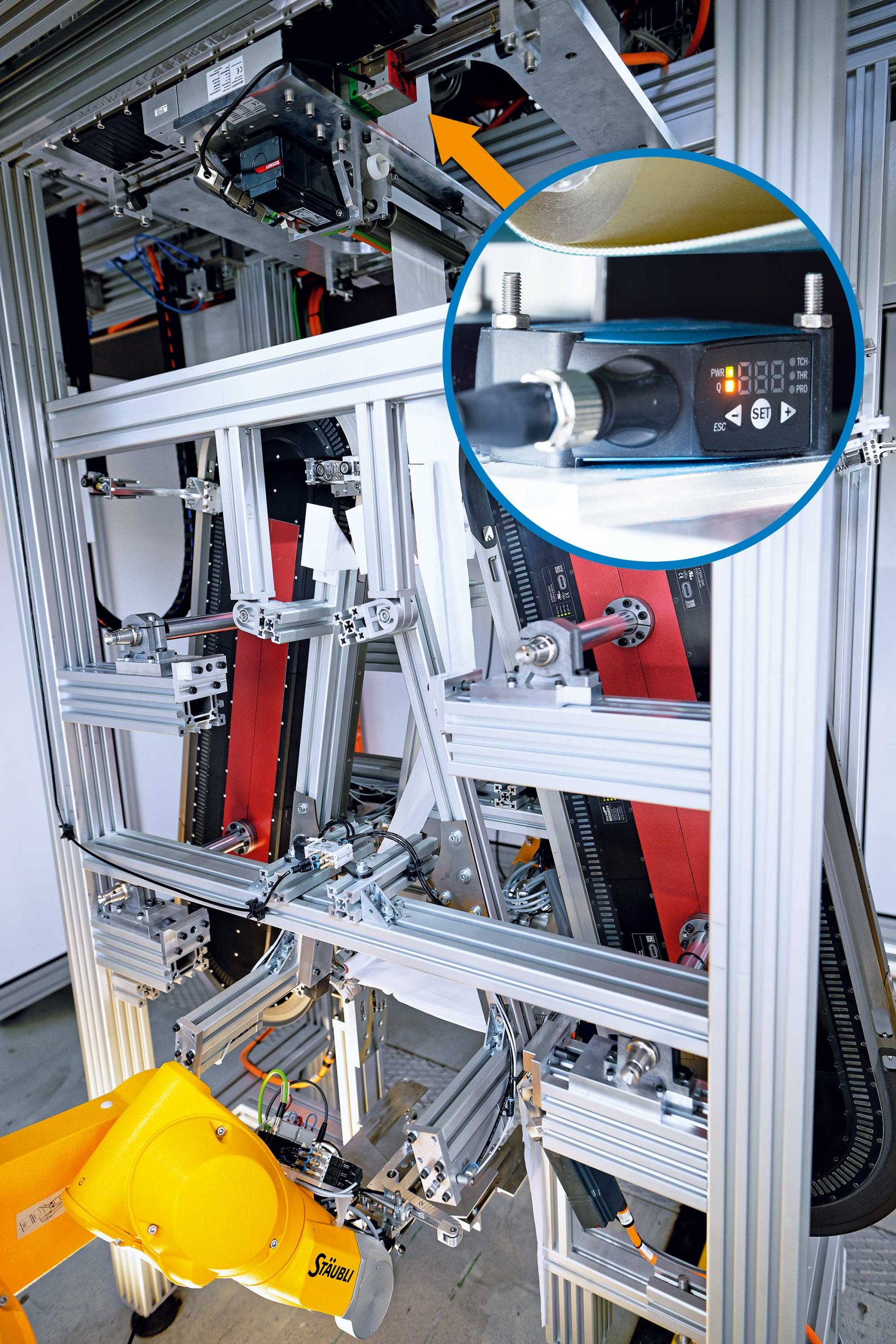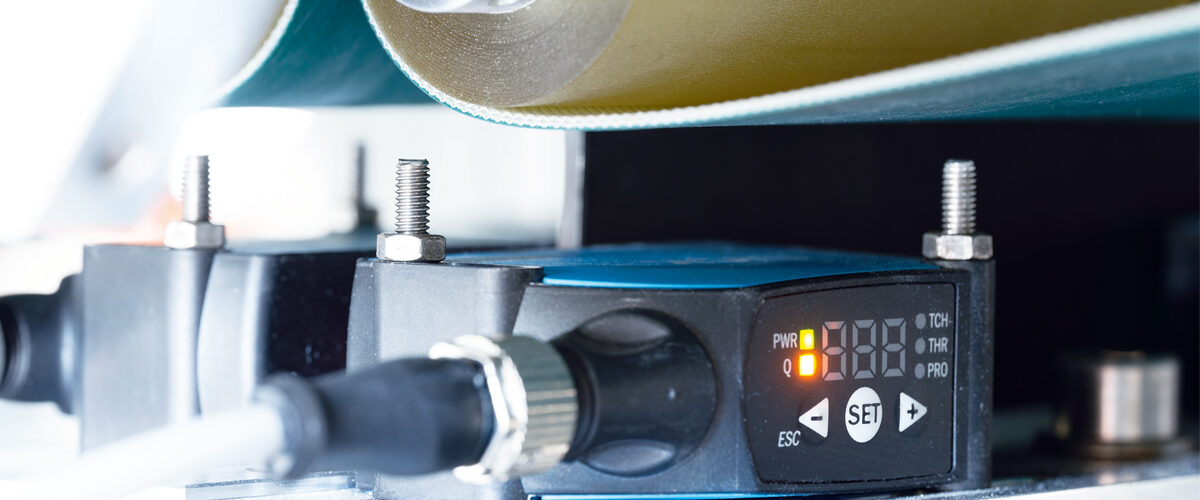Increasing throughput in processes for battery cell folding for production of electric vehicles
Experts estimate that by 2030 the majority of cars produced will be electrically operated. That is why the production capacity for battery cells is rising and the predicted investments in battery cell factories are already exceeding by several fold the global production volume in 2022.
However, the process for battery cell production is far from fully developed. To speed up the manufacturing process for battery cells, the Technical University of Munich (TU Berlin) developed a folding process that allows for higher throughput rates. But with higher machine and process speeds, the requirements on the automation engineering also increase. Sensors from SICK play a decisive role in solving these requirements.

Battery technology at the heart of electromobility
A core process in the production of battery cells is the processing of the electrode foils and separators. Different processes are used for different cell types. This includes the winding of foil tracks to produce so-called “jelly rolls.” Various stacking processes ensure that cell stacks are formed from the individual anodes, cathodes, and separators.
The winding processes are already characterized by high speeds and process stability. And the stacking of battery cells offers advantages for the electrical performance of the batteries. The combination of the two processes is referred to as Z-folding, where individual electrode sheets are connected with a separator just prior to folding.
High stacking speed is a major challenge
When further developing the stacking and Z-folding processes for battery cells, increasing the stacking speed is a key challenge. A team lead by Franz Dietrich, Professor for Handling and Assembly Technology at the Institute of Machine Tools and Factory Management at TU Berlin, is tackling this challenge.
However, the speeding up of the processes must not have a negative impact on the precise placement accuracy of the stacked electrode sheets. In contrast to conventional process alternatives that use sequential pick-and-place operations, TU Berlin developed a continuous process sequence, from pickup and handling to positioning and alignment of the electrode sheets.
Compared to established process sequences, the aim in future is to significantly increase the productivity with a constant and up to 2,000 mm/s fast feed rate for the materials.

Overcoming the limits of automation engineering processes for battery cells
Two sensor solutions from SICK are being used for this purpose. The WLL180T-2 fiber-optic sensor with its switching frequency of up to 31.2 kHz achieves a response time of ≤ 16 µs. Fiber-optic sensors can also be integrated into small installation spaces.
And using the KTS Prime contrast sensor from SICK, measurement resolution and feed speed increase exponentially. With a switching frequency of up to 70 kHz, response times of up to 3 µs are possible.
The process at TU Berlin uses sensor pairs comprising either fiber-optic sensors or KTS Prime contrast sensors. This enables the sheet position in the feed direction as well as the angle of the front edge of the sheet to be detected and, if necessary, corrected.
But that’s not all! The experts at TU Berlin are continuing to work on speeding up the Z-folding process for battery cells and are jointly developing the battery manufacturing process with SICK.
Want to learn more about this process?





